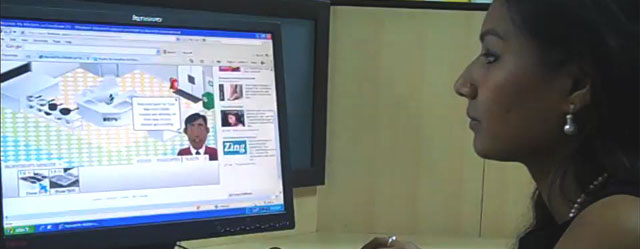New TV Show in the Air and on the Seas
Airline and cruise ship passengers will soon be able to see an Emmy award-winning NASA TV program that shows how technology is part of everyday life, NASA announced Friday.
The producers of “NASA 360” have reached agreement with Airline Media Productions (AMP) International to air the half-hour magazine-style TV show through AMP’s entertainment outlets around the world.
Earlier, in a similar unique attempt, NASA astronaut Doug Wheelock became the first person to “check in” from space using the mobile social networking application Foursquare. (Read: Social Networking from the Outer Space)
[ Also Read: Google Enables Delta to Offer Internet in the Air ]“We’re excited to work with AMP International to bring ‘NASA 360’ to hundreds of thousands of the 760 million people who fly each year,” said Mike Bibbo, the program’s producer.
AMP International provides in-flight entertainment for airlines in the U.S., Middle East and Asia, including US Airways, Virgin America, Singapore Airlines, Philippine Airlines, Middle East Airlines, Flydubai and Tunisair.
[ Also Read: Xfinity TV App for iPad to Watch TV Shows ]The company also supplies video products to cruise ships and other users of entertainment services.
“We thought travelers would be interested in learning more about how NASA technology makes planes safer, quieter and more efficient and other contributions to their daily lives,” said “NASA 360” co-producer Kevin Krigsvold.
“NASA 360” is based at NASA’s Langley Research Center in Hampton, Va. It is produced for the agency by the National Institute of Aerospace.
Advertisements:
Business Proposal
Digital Media Campaigns
Raman Media Network: Connecting Communities
In addition to AMP International, the program airs on NASA Television and 450 public broadcasting, cable and commercial stations across the country.
The show can also be seen on YouTube, MySpace, and Facebook and through iTunes.
“NASA 360” is hosted by TV actor Johnny Alonso and local TV/radio personality Jennifer Pulley (pictured above).
Photo courtesy: NASA / Jennifer Pulley






